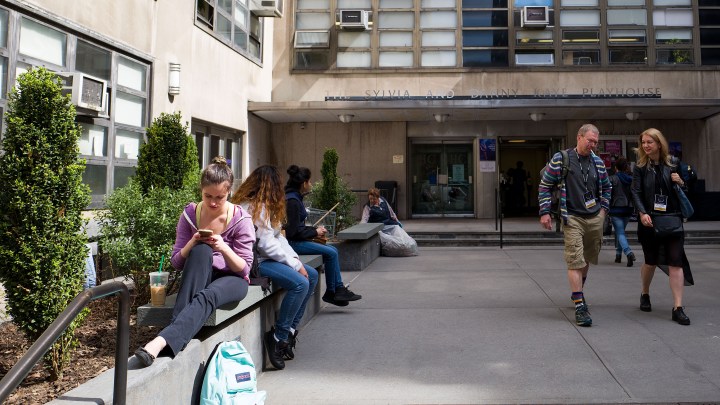
Fewer students fill out FAFSA, enroll in college since pandemic began
Fewer students fill out FAFSA, enroll in college since pandemic began

Fewer students have been applying for financial aid for college since the pandemic began, according to two reports out this week.
Just 68% of families with students in college filled out the Free Application for Federal Student Aid — or FAFSA — last year. That’s the lowest it’s been in the 14 years that Sallie Mae has been tracking it.
The number of graduating high school seniors who filled out the FAFSA has also fallen to 8.5% in the last two years, per the National College Attainment Network.
That matters; filling out the FAFSA is the only way to qualify for most need-based financial aid, both grants and loans.
In a year when millions of people lost their jobs and have been struggling financially, Ashley Boucher at Sallie Mae said she hoped to see more people filling out the FAFSA.
“The last thing I want to see when finances can potentially be tight for families is them not taking advantage of the resources that are out there,” Boucher said.
Instead, the number of students applying for financial aid dropped significantly. “That’s particularly true for the people who tend to have the hardest time paying for college, who go disproportionately to community colleges,” said Sara Goldrick-Rab, who runs the Hope Center for College, Community and Justice at Temple University.
One big reason for that is a lot of students just spent a year in virtual classes, “which in many cases led to disengagement and led them to question whether, in fact, they want to go on to more learning,” Goldrick-Rab said.
Studying remotely also meant many low-income students weren’t as connected to counselors and college access programs, according to Ally Levy at the organization College Access Research and Action.
“Students really rely on school support to get through the application process and financial aid process. And without that ready access to counselors, it was harder to get through the process,” Levy said.
The National College Attainment Network estimates that about 270,000 fewer high school seniors have filled out the FAFSA since the pandemic began.
The biggest drops have been noted among low-income students and students of color, said MorraLee Keller at NCAN. “It’s a huge deal,” Keller said. “Students who complete a FAFSA have a much higher post-secondary enrollment rate than those students who do not.”
And, if more students go back to in-person school in the fall, “you hope for a little bit of rebound starting with the class of ‘22,” she said.
But, Keller added, it’s going to take a lot of work to get students who did not enroll these last two years back to college.
There’s a lot happening in the world. Through it all, Marketplace is here for you.
You rely on Marketplace to break down the world’s events and tell you how it affects you in a fact-based, approachable way. We rely on your financial support to keep making that possible.
Your donation today powers the independent journalism that you rely on. For just $5/month, you can help sustain Marketplace so we can keep reporting on the things that matter to you.


















